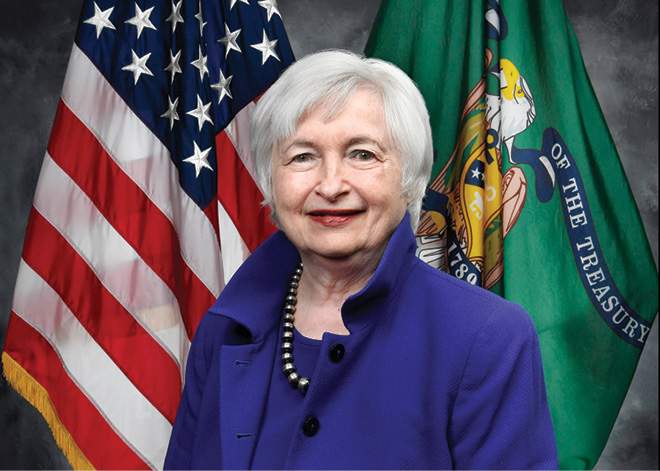The hottest geopolitical and economic topic these days is how businesses can reduce their dependence on China as the world’s factory. Companies have considered alternatives for manufacturing outside of China for over a decade, as costs have risen and regulatory changes have made it less competitive. The shift accelerated dramatically since the imposition of U.S. import tariffs, the pandemic and the increasing geopolitical tensions between the United States and China. Concerns over the risks of not having a resilient supply chain are now a dominant location factor and driving location decisions as never before. From boardrooms to the newsroom and beyond, this perception of heightened risk is driving location decisions worldwide in three ways: reshoring, nearshoring and friend-shoring.
Bank of America reported that mentions of the word “reshoring” in the earnings calls of S&P 500 companies increased by 128% in the first quarter of 2023 over the same period a year earlier. Reshoring and nearshoring have been in the lexicon of location strategists for over a decade. The latest incarnation, “friend-shoring,” describes companies locating operations in countries with historic political and trade ties and/or aligned geopolitical interests. These monikers describe the results of a thorough site selection analysis evaluating the operating costs, conditions and intangible risks of remaining in an existing location or in the consideration of new locations.
Diversification is not a new trend. The Economist did a special report on reshoring manufacturing over a decade ago in January 2013. They reported a “growing number of American companies are moving their manufacturing back to the United States.” The number of companies known to have “reshored” their operations was only in the hundreds, but the publication surmised there were likely many more doing so quietly; they were correct. In addition, companies were also considering how to diversify their manufacturing footprints to best serve their customers as well as shareholders.
The need for diversification and risk mitigation and the factors behind these trends are resulting in both geographic regionalization and geopolitical grouping of manufacturing locations.
Moving Away from the Middle Kingdom
From 2000-2010, as China solidified its position as the world’s factory, rising wages and skills shortages were beginning to narrow the opportunity for labor arbitrage for companies locating there. In addition to labor costs, China’s utility costs were also higher than in the United States and other locations by as much as 35-50%. However, China has the world’s deepest and most comprehensive domestic value chains, from raw materials to intermediates, components, and manufacturing support services, all at global scale. Its domestic transportation infrastructure is highly efficient, as are its global transportation connections with the rest of the world. Although some costs were rising, total delivered costs were competitive because of production efficiency and flexibility. Companies continued to rely on China as a manufacturing and sourcing location because it served their interests of having an efficient supply chain that maximized profitability. Thus, they continued to invest heavily in China.

By 2010, China’s consumer class had emerged, and the country became a massive market in its own right as wages rose and China continued to invest in its own development. The most profitable U.S. companies operating in China were those both selling to the domestic market and exporting. Despite the operating cost challenges, business sentiment continued to be bullish on investing and doing business in China.
Throughout the decade, continued operating cost inflation, unanticipated regulatory changes, growing enforcement of environmental regulations and workforce availability constraints put pressure on companies to reconsider their China manufacturing locations vis-a-vis other locations. These concerns spawned the terms China+1 or China+Many, making them a common part of the location strategy vernacular as diversification gained in importance.
The Tipping Point
The imposition of U.S. tariffs kick-started the broader diversification of manufacturing supply chains. Companies with significant exports to the United States sought out alternative locations for their investments, and the China+1 trend accelerated. Chinese manufacturers quickly established operations in places like Vietnam and Thailand. Global MNCs continued to produce in China for the China market and the rest of the world, but relocated some production destined for the United States to existing operations in the United States and invested in new factories in North America (particularly Mexico), Central Europe and significantly in Southeast Asia.
The COVID-19 pandemic changed everything. Supply chain disruptions exacerbated by China’s zero-COVID policies highlighted the fragility of the global manufacturing system built upon highly efficient, concentrated and tightly integrated supply chains. This fragility made them susceptible to the vagaries of natural disasters and, more importantly, the whims of government policy. COVID-19 was the impetus, the push, to diversify manufacturing locations and rethink supply chains and their resiliency.
Incentivizing Diversification
These risks have revived industrial policy not only in the United States but globally, as countries supercharge incentives to attract investment in key sectors considered essential to national security. The CHIPS Act and Inflation Reduction Act in the United States have commanded headlines, but Europe, Japan and South Korea have their own incentive programs to attract domestic as well as foreign firms to invest in critical manufacturing infrastructure.
Other locations are also promoting their geographies as alternatives to China and incentivizing investment. Eastern Europe is promoting proximity to the EU market and just-in-time delivery of shortened supply chains. ASEAN nations are all chasing value-added manufacturing. India, which sees itself as the only real alternative for China as a manufacturing destination, offers both competitive manufacturing costs and a rapidly growing domestic market. Its government has been more aggressive at targeting FDI, launching a series of regulatory reforms and offering incentives to make it a more attractive and easier place to do business. Incentives and regulatory reforms are pulling companies to diversify globally.
Hedging bets
AMCHAM China’s latest survey, the “Business Climate in China” report (September 2023), found that 40% of companies are redirecting or planning to redirect investment originally planned for China with most looking to Southeast Asia. Another 19% are considering moving some of their operations out of China over the next one to three years.
Michael Hart, the president of AMCHAM China, noted in an interview with Bloomberg News in February that U.S. companies are “exhausted” from three years of China’s zero-COVID policy, a majority are not profitable and competition is increasing. Chinese companies are becoming more competitive, and government industrial policy initiatives are favoring domestic companies. However, China is too big of a market to ignore, and some global companies are doubling down on their investments. Regardless of a company’s outlook on China, how to effectively diversify and hedge their China bets are at the core of corporate location strategy discussions now.
What Lies Ahead
While reshoring manufacturing to the United States is the buzzword of the year, it is only part of a larger trend of diversification. Sometimes companies choose to reshore to their home market; others choose alternative locations.
For investments in strategic industries, there are clear indications that China is losing out on investments in semiconductors, EV batteries and battery materials and other sophisticated high technology, based on data recently published by the IMF, with investments being made preferentially in the United States, Japan, Korea, and Europe, ironically, by Chinese firms. More interestingly, for U.S. companies not reshoring, there is a bigger trend to invest in countries that are closely aligned geopolitically with the United States than countries than are located geographically close. We expect to see this “friend-shoring” as a bigger trend than nearshoring or even reshoring as diversification continues throughout the rest of this decade.
 “Favoring the friend-shoring of supply chains to a large number of trusted countries, so we can continue to securely extend market access, will lower the risks to our economy as well as to our trusted trade partners.”
“Favoring the friend-shoring of supply chains to a large number of trusted countries, so we can continue to securely extend market access, will lower the risks to our economy as well as to our trusted trade partners.”
— U.S. Treasury Secretary Janet L. Yellen, April 2022, in remarks to the Atlantic Council
The US is benefiting from these trends. In 2022 it retained its lead as the top destination for FDI, securing $151 billion in investment an increase of 73% from 2021. Diversification is resulting in China accounting for a smaller percentage of global FDI in terms of project numbers and value. Southeast Asia, particularly Vietnam, is attracting the most attention from investors looking for alternatives to China. But India has been the real winner. It is finally starting to realize its potential as the only country with the demographics to be an alternative to China for large scale manufacturing.
In 2022, India was the most attractive destination for foreign investment in Asia, attracting almost 1,000 projects valued at about $76 billion, including significant investments in semiconductors and renewable energy. These announcements are on top of the stated interests of Apple, Samsung and other electronics firms as well as Boeing in aerospace to have their supply base consider diversifying into India. Australia, Vietnam and Malaysia rounded out the top four in Asia in terms of capital. China was only fifth at $16.5 billion and followed closely by Singapore, South Korea, Thailand and Indonesia.
Geographic diversification will accelerate in the future and is not limited to Western firms. Chinese companies are diversifying their manufacturing locations to follow their customers as they in turn seek out new locations. Europe and Mexico are benefiting from Chinese investments in EV battery materials and renewable energy projects as well as more traditional components or intermediate inputs into finished goods assembly. Despite increasing obstacles for Chinese investment into the United States, their appetite to access the world’s largest economy remains.
As geopolitical events unfold and natural disasters and climate change push companies to consider locations more favorable not only to their bottom line, but also to their boardroom ESG commitments and risk appetite, we will see companies increasingly diversify their investments around the world. Risk mitigation, the pull of strategic investment incentives and government regulations will influence location decisions in ways we have not seen before. We can expect the rest of this decade will see the disproportionate influence these factors have on where companies choose to locate globally.
Dennis J. Meseroll is a co-founder and executive director and John J. Evans is a co-founder and managing director of Tractus Asia Limited, a leading site selection and FDI advisory firm.
